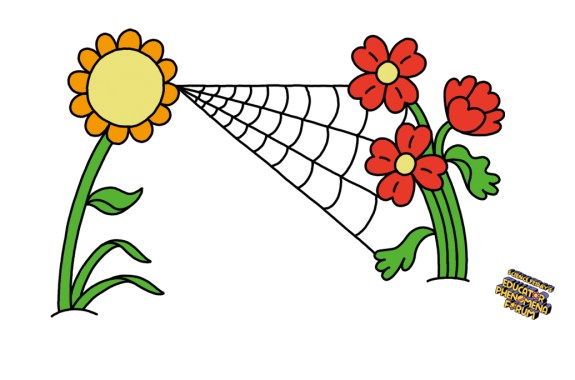Grade Level
9-12
minutes
65 minutes
subject
Physical Science
stem practices
Analyzing and Interpreting Data, Asking Questions and Defining Problems, Developing and Using Models
Activity Type:
animal adaptations, forces and motion, build a model, analyze and interpret data
 This resource is part of Science Friday’s Educator Phenomena Forum and was developed collaboratively by Jose Rivas, an engineering and AP science teacher in Lennox, California, and Sarah Han, a PhD candidate in Integrative Biology and Biomimicry at the University of Akron in Akron, Ohio. Click here for a folder of classroom resources.
This resource is part of Science Friday’s Educator Phenomena Forum and was developed collaboratively by Jose Rivas, an engineering and AP science teacher in Lennox, California, and Sarah Han, a PhD candidate in Integrative Biology and Biomimicry at the University of Akron in Akron, Ohio. Click here for a folder of classroom resources.
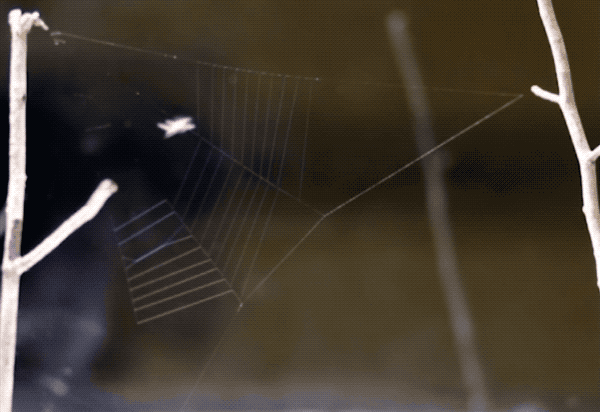
Take a moment to examine the gif above. What do you notice? What do you wonder?
Keep track of your ideas on the Dynamic Webs Worksheet.
Whoa! Do you see how the web seems to get slack and wrap itself around the bug? The spider seems to get pulled forward really quickly. Is the spider doing something to make the web go slack? How does the spider create a web that acts like a trap?
In this activity, you will learn more about these dynamic webs, then build a model to understand the laws of physics that some spiders use to catch their dinners.
How Do Spiders Capture Prey?
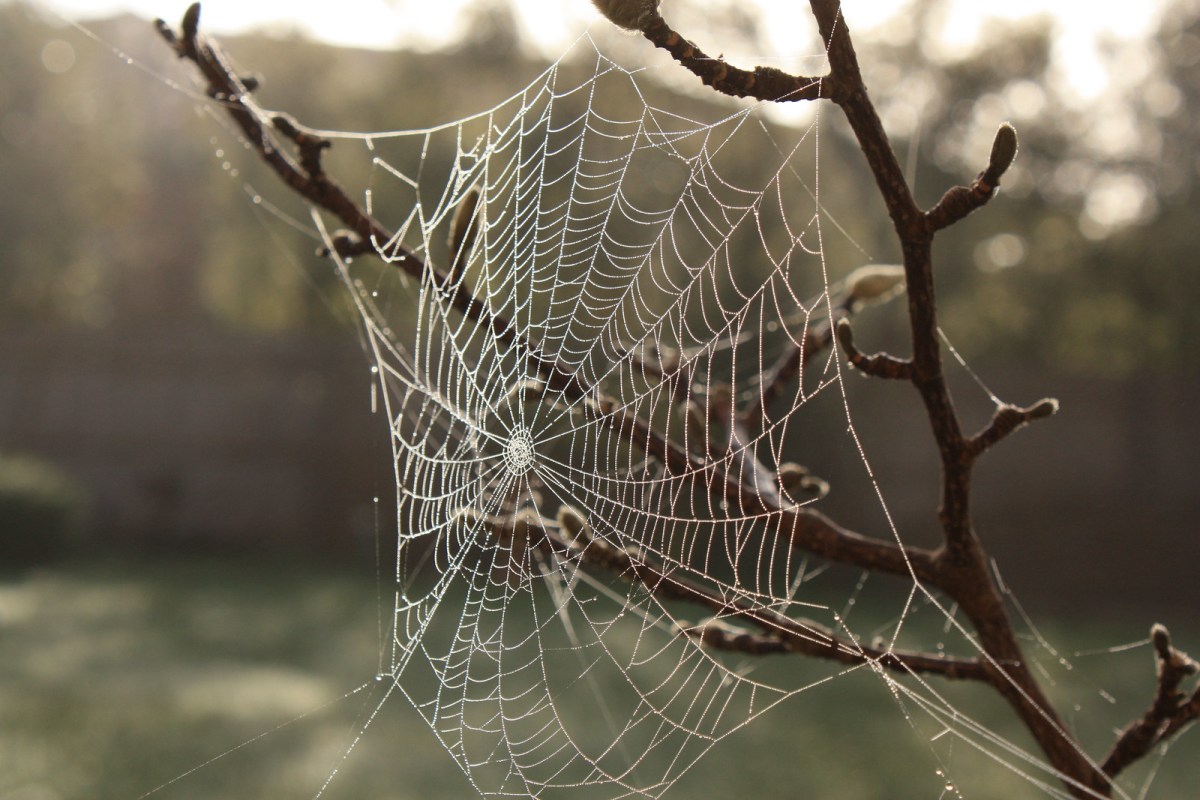
Have you ever wondered how spiders capture prey? It has a lot to do with how they create their webs, and for some types of spiders the structures they create can store mechanical energy, just like a spring.
Mechanical energy gives an object the ability to do work. The work done by a system can be transferred into potential energy or kinetic energy. This transfer of energy occurs all the time in our daily lives. When we eat food or when we drive a car, energy is doing work and changing into potential and kinetic energy. Some types of spiders have also figured out how to use energy to their advantage. What types of energy do you think spider webs use?
In order to understand how these types of spiders use mechanical energy, we need to understand a specific type of mechanical energy called elastic potential energy.
Let’s Spring Into Elastic Potential Energy
Many types of mechanical systems use elastic potential energy. The most common device that uses this type of energy is a spring.
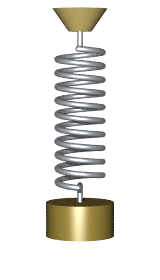
When a force is applied to a spring, it is placed in either tension or in compression, which allows the spring to store energy. When the spring is released the stored elastic potential energy is converted to kinetic energy and the spring does work.
Most elastic devices and materials follow what is known as Hooke’s Law. Hooke’s Law states that a material will return to its original position after a force has been applied to it. The Law also states that the amount of force applied is proportional to the materials displacement. Imagine pressing a spring between your hands, or the squish of the springs in your mattress. A spring is able to store energy because its length is easy to change and it returns to its original shape. It is the architecture of the spring, in other words, the shape and design of the spring, that allows it to do this.
How Does The Architecture Of A Spider Web Allow It To Behave Like A Spring?
Some types of spiders are experts at using elastic potential energy to capture prey. They use unique structures to make this possible. One of these types of spiders is known as the Triangle Weaver.
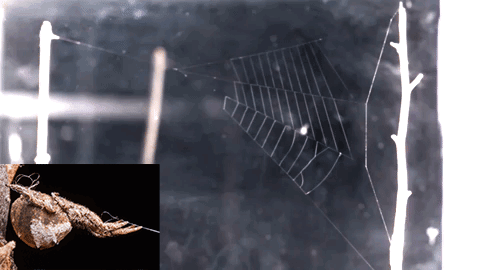
Triangle Weavers use their webs like slingshots. When the Triangle Weaver makes its web, it pulls on each corner to create tension in the threads, just like you might pull back a slingshot and hold it. When the Triangle Weaver senses its prey is near, it releases the web. The elastic potential energy is converted into kinetic energy and the system does the work of capturing a juicy meal for the spider.
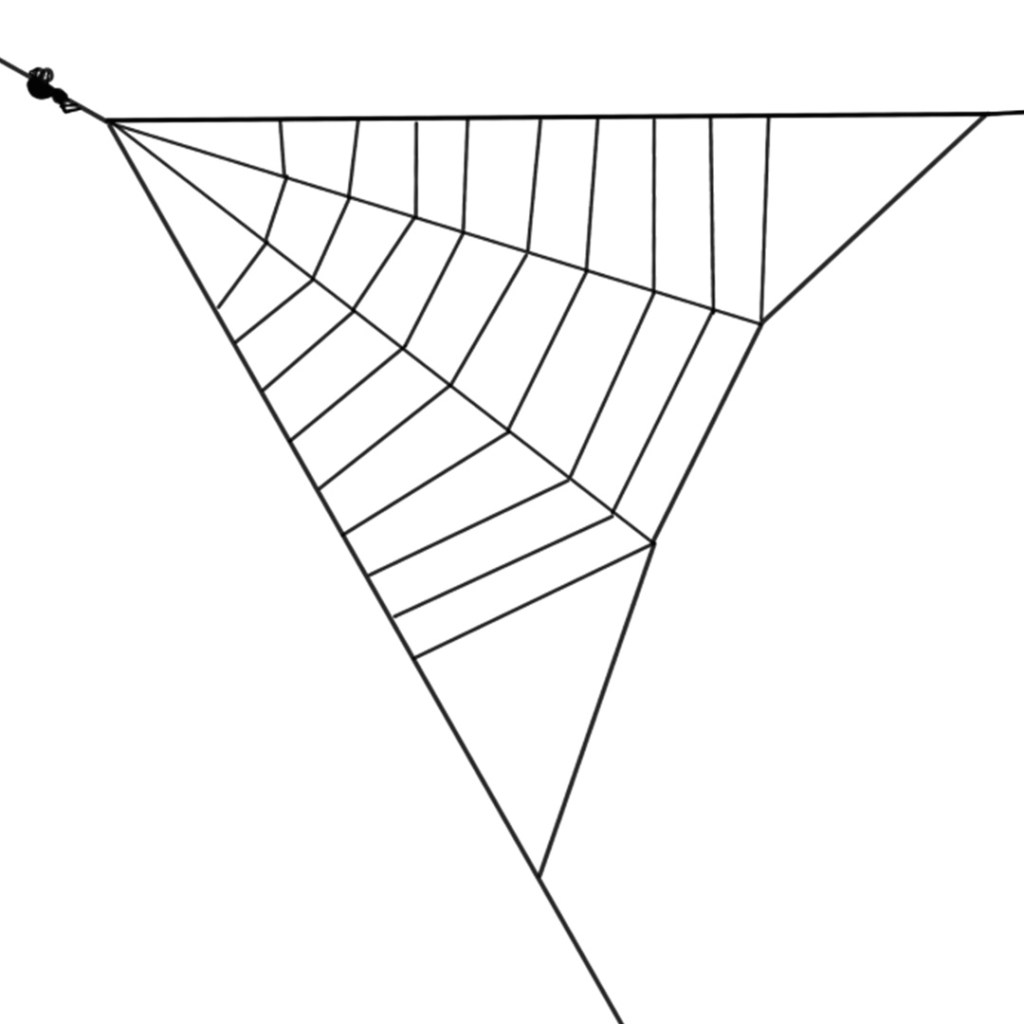
Another spider that uses mechanical energy to capture its prey is the Black Widow.
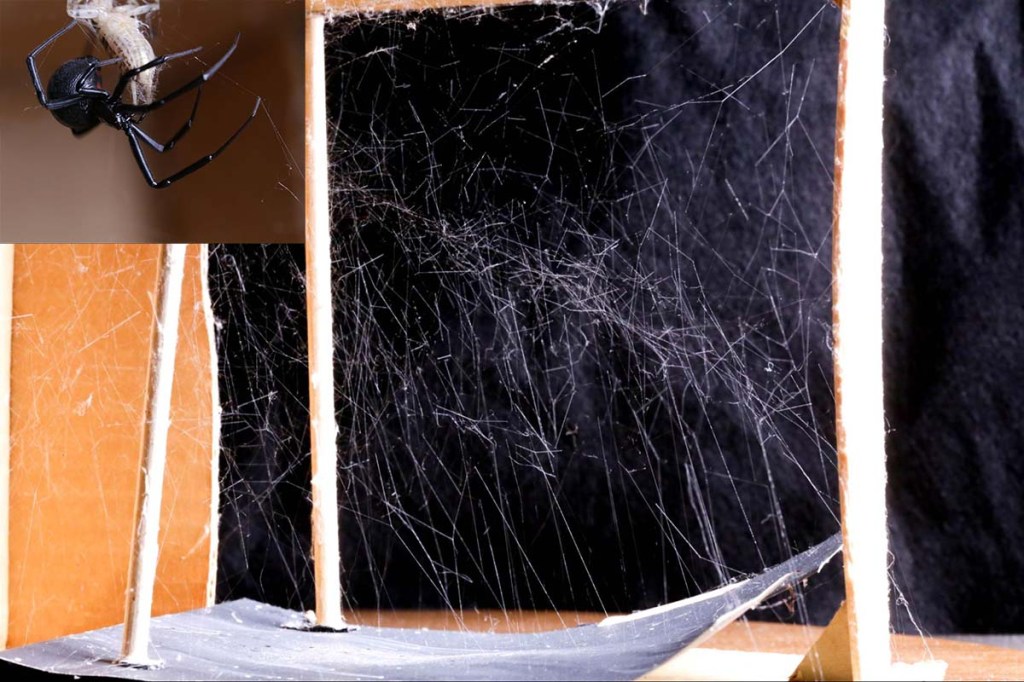
Black Widow spiders create a web scaffold called a cobweb, then use individual strands called gumfoot silk to attach it to the floor. How do you think this spider uses elastic potential energy to capture prey?
Now watch the gif below. What happens when the cricket touches the silk?
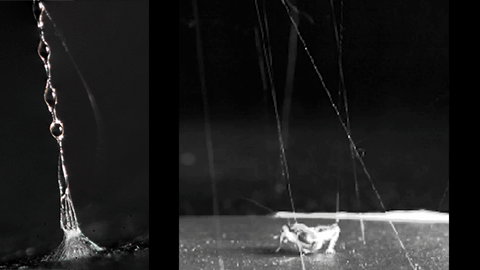
When an insect passes by the gumfoot silk and breaks its attachment to the floor, the elastic potential energy is released and the silk shoots the prey upwards, trapping it.
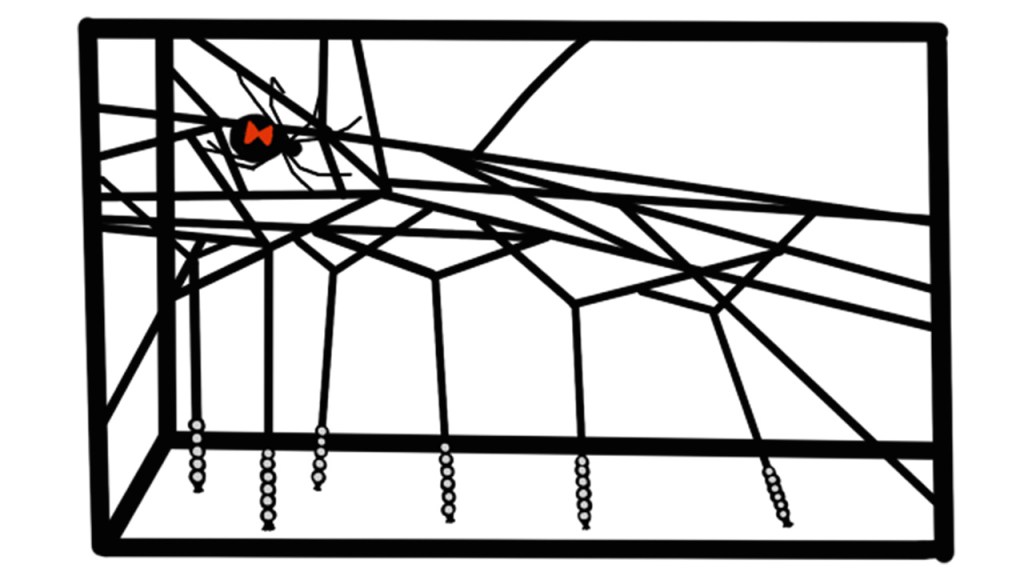
As you can see, these spiders are experts at using the laws of physics to their advantage. Not surprisingly, scientists are learning about the relationships between the laws of physics from spiders and their ingenious webs. Let’s explore one of these relationships by making an elastic potential energy test bed.
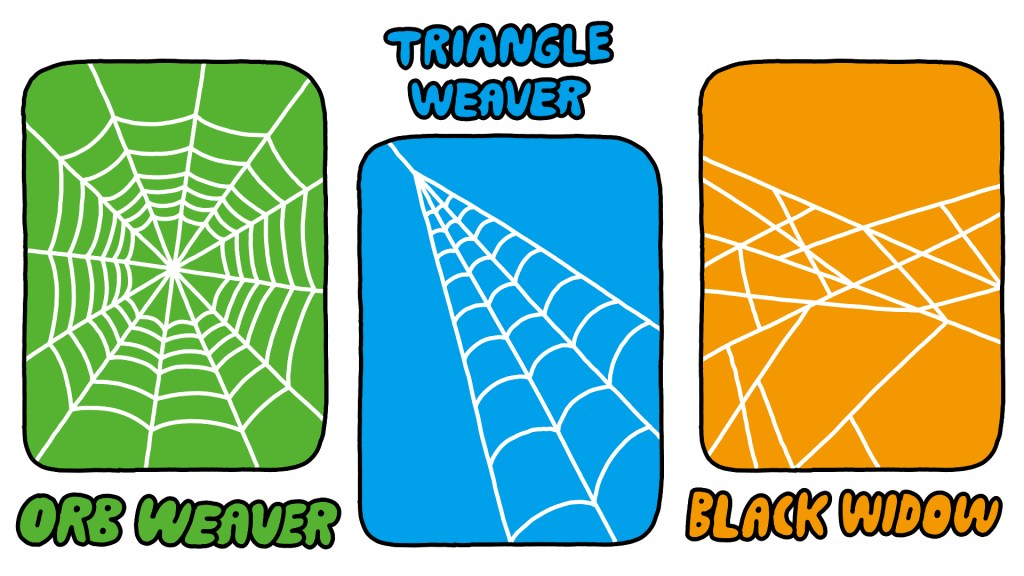
Materials
⅛” Wooden Dowel
Poster board
Rubber bands of various thicknesses and sizes
Glue gun
Tape
Ruler
Tacks
Digital scale
Activity: Exploring The Relationship Between Force And Height
Protocol
Using the instructions in this document, you will construct your test bed. Then, you will model how a black widow spider captures its prey in an experiment scientists like Sarah Han perform.
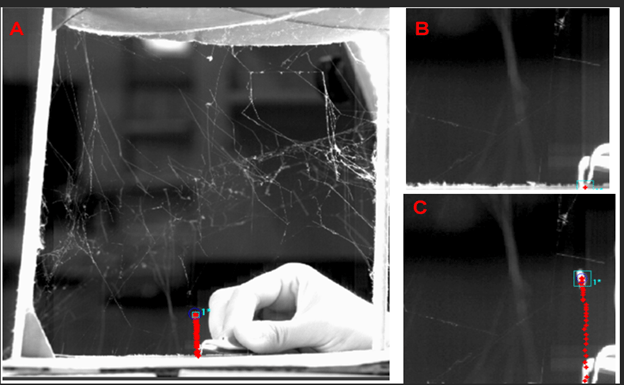
- To start the experiment, you must first measure the unstretched length of the rubber band in centimeters.
- Pull the rubber band to the base of the test bed. Now you can measure the stretched length of the band. The difference between the stretched and unstretched length is called the rubber band’s displacement. The displacement will remain constant for this investigation.
- Measure the mass of the toy insect and multiply it by 9.8 m/s/s to obtain the insect’s weight in Newtons. Record this value.
- Next, attach the insect toy to the rubberband with a tack.
- Pull down the insect and release it. Measure how high it goes and record it.
- Continue to add more insects. Record the combined insects’ weight in Newtons and the height they reached.
- Once you have performed the test with several bugs, graph your results with Newtons on the y-axis and height on the x-axis.
What relationship do you notice? Does the graph have a familiar shape? Is the relationship between weight and displacement linear, exponential or inverse?
Scientists are also interested in other aspects of spiders and their silk. Check out the video to understand the different ways scientists investigate the unique biology of spiders.
Reflection Questions
- Scientists around the world are also actively studying how spiders use their webs actively to capture prey. What correlations do you see between what you investigated and what scientists investigated?
 This resource is part of Science Friday’s Educator Phenomena Forum and was developed collaboratively by Jose Rivas, an engineering and AP science teacher in Lennox, California, and Sarah Han, a PhD candidate in Integrative Biology and Biomimicry at the University of Akron in Akron, Ohio. Click here for a folder of classroom resources.
This resource is part of Science Friday’s Educator Phenomena Forum and was developed collaboratively by Jose Rivas, an engineering and AP science teacher in Lennox, California, and Sarah Han, a PhD candidate in Integrative Biology and Biomimicry at the University of Akron in Akron, Ohio. Click here for a folder of classroom resources.
About The Team
Jose Rivas likes to explore the connections between physics and biology in his science and engineering classes. Being a comic book nerd, he has used Spider-man as a vehicle to engage his students in understanding these connections and to help them see that all science disciplines complement each other, allowing for a deeper understanding of the processes that govern our world.
Sarah Han studies how spiders use their webs for prey capture by manipulating, storing, and releasing energy within the silk. Studying how spider silk deals with energy can help us to improve existing materials, and maybe to finally create a synthetic spider silk as strong and tough as the real thing.
Additional Resources
- Q&A: The science behind Spider-Man’s superpowers
- MythBusters Jr. answers: Is Spider Silk Stronger Than Steel?
Next Generation Science Standards
This resource works toward the following performance expectations:
- Disciplinary Core Idea
- HS-PS3-2: Develop and use models to illustrate that energy at the macroscopic scale can be accounted for as a combination of energy associated with the motions of particles (objects) and energy associated with the relative positions of particles (objects).
- HS-PS3-3: Design, build, and refine a device that works within given constraints to convert one form of energy into another form of energy.
Credits:
Written by Jose Rivas
Edits by Abigail Holstein and Xochitl Garcia
Advice and Review by Sarah Han
Digital Production by Xochitl Garcia and Diana Montano
Meet the Writers
About Jose Rivas
Jose Rivas is an engineering and AP science teacher at the Lennox Math, Science and Technology Academy in Lennox, California.
About Sarah Han
Sarah Han is originally from California, where she got her B.S. in Entomology from UC Davis. She now studies spiders at the University of Akron in Ohio. Sarah’s research focuses on web-based hunting techniques, and more broadly on web kinematics. She hopes to someday find a career that combines her love of art and science.
